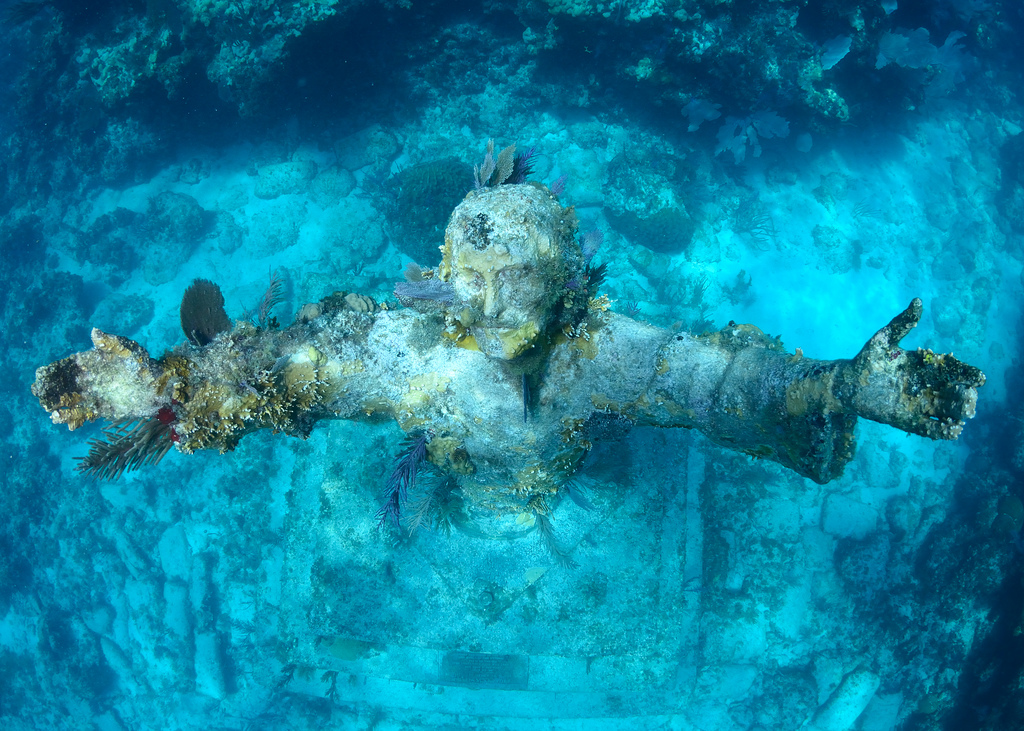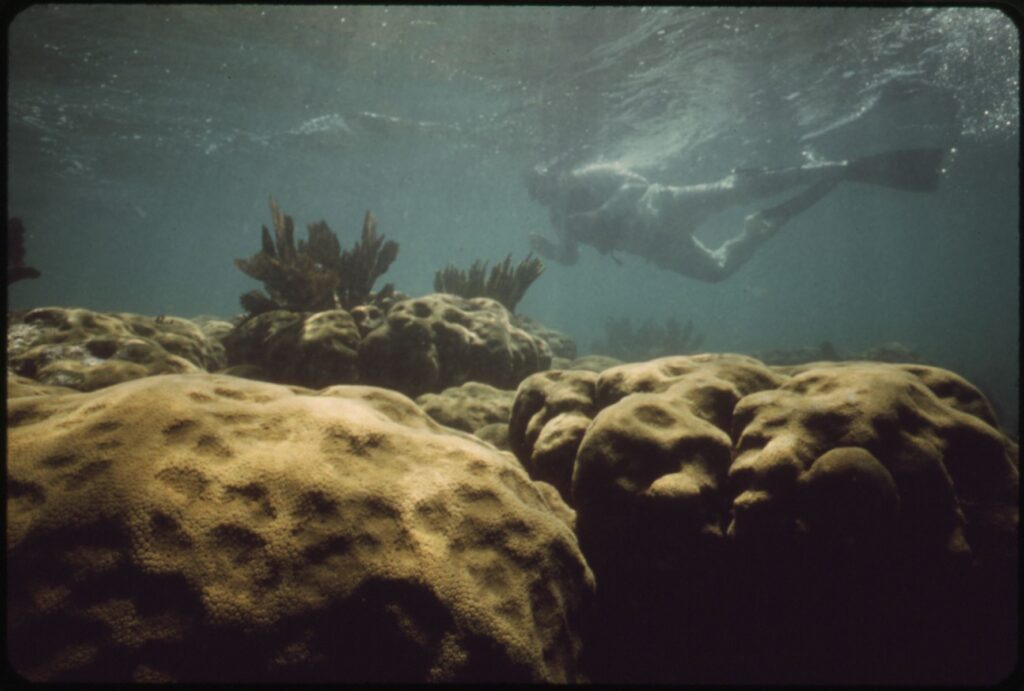Diving in Key Largo
The Diving Capital of the World
Barefeet Vacation Rentals welcomes you to Key Largo, which is home to the only living coral barrier reef in the US and the third largest in the world—an island paradise of tropical ambiance and natural beauty.
The waters of Key Largo provide an ideal setting for a variety of water activities. You can explore the winding creeks by kayak, embark on a sunset cruise, or enjoy a thrilling paragliding adventure. However, the real treasure of Key Largo lies beneath the ocean’s surface. Here, you will discover fragile, colorful coral reefs, unique shipwrecks, and a diverse range of marine life, including over 500 different species of fish. From impressive schools of blue-striped grunts to toothy green moray eels, the underwater world teems with life. This is where you will experience some of the best diving in the world and understand why Key Largo is known as “The Diving Capital of the World.”
Click here to see just some of our local Dive Operators
Where To Dive In Key Largo
Key Largo is an ideal diving destination, featuring well-preserved natural coral reefs located just a few miles from the shore. It offers shallow reefs for snorkelers and deeper, coral-encrusted wrecks for experienced divers. This makes it a perfect paradise for both divers and snorkelers.
The Florida Keys National Marine Sanctuary was established to protect its spectacular and unique marine habitat, covering 2,600 square nautical miles of underwater wonders. A key component of this sanctuary is the famous John Pennekamp Coral Reef State Park, which is the country’s first underwater preserve and serves as the heart and soul of this diving capital. It offers an extraordinary underwater world filled with vibrant colors and remarkable sights!
There is a long list of coral reefs and beautiful dive sites. Join us as we share with you some of the best-known:

Christ of the Abyss
Shallow to 25’
The bronze statue is the main attraction at John Pennekamp Park and is recognized as the most popular underwater dive site in the world. This nine-foot statue of Jesus Christ rests gracefully under 20 feet of water and is positioned close enough to the surface to be seen by both snorkelers and divers. The site is also renowned for its impressive giant brain coral specimens.
Molasses Reef
10’ to 70’
The massive brain coral heads and pillar corals of Molasses Reef, part of the tongue-and-spur reef formation, are possibly among the most beautiful collections of reefs in Florida. This area offers excellent opportunities for both snorkeling and diving, allowing visitors to explore a variety of tropical marine life, including turtles, spotted eagle rays, and Caribbean reef sharks.
The Elbow
12’ to 35’
This reef features several historic shipwrecks and provides opportunities for face-to-face encounters with Moray Eels and Barracuda. The shallow, crystal-clear waters make this an ideal site for learning how to dive and a fantastic location for underwater photography!
City of Washington
15′ to 25′
The remains of this 320-foot ship are scattered on the ocean floor of Elbow Reef, a renowned location known for its stunning coral reef and vibrant marine life, including a variety of colorful tropical fish. It is an excellent spot for snorkeling and diving.
Benwood Wreck
50′ offshore to 20′ inshore
Explore the stunning underwater world surrounding a 360-foot shipwreck from World War II, where you can dive alongside large schools of Grunt and Porkfish. This site offers excellent visibility and is teeming with marine life, making it a fantastic spot for both snorkeling and diving. It’s also a popular destination for night dives!
French Reef
Shallow to 100’
This dive site is renowned for its swim-through reef formations, shallow caves nestled within large coral heads, and the presence of resident southern stingrays. It is a very popular destination for divers looking to explore the diverse marine life within its numerous tunnels and caves. The area features some of the most spectacular reefs in the Florida Keys.
The Bibb & The Duane
50′ to 130′
The twin 327-foot Coast Guard cutters lie near to each other, covered in vibrant coral and surrounded by large barracudas. The often strong currents and deep waters make diving in this area an exciting experience suitable for advanced divers. Please note that both ships cannot be explored during the same dive.
The Speigel Grove
40′ to 135′
This is one of the largest artificial reefs in the world and is home to incredible marine life. The Spiegel Grove is a wreck that should not be missed! This 510-foot vessel sits upright in 130 feet of water and requires at least six dives to fully explore. It is intended for experienced divers only and should not be explored alone. It is recommended to discover this site through a guided dive with an experienced instructor.

Dive Tips & Etiquette
We want you to be in the know when it comes to our local dive tips and etiquette:
- The “Upper Keys Artificial Reef Medallion” is a $10 medallion required by many dive operators for diving on artificial reefs in Key Largo, Florida. This medallion supports the community’s debt related to the Spiegel Grove, a ship sunk to become an artificial reef. It’s a user-pay, user-benefit program that helps fund artificial reef construction and monitoring.
- It’s illegal to harvest coral in Florida.
- You shouldn’t feed the fish since it destroys their natural feeding.
- Avoid touching or standing on coral, since even the lightest touch can damage it.
- Follow sanctuary rules and taking simple steps to be a good, thoughtful steward of the environment.
- Ask about the weather conditions. Poor visibility, strong winds & surge from waves reduce safe interaction at the reef.
- Remember that even the lightest touch with hands, fins or other dive and snorkel equipment can damage sensitive coral polyps, the small living animals that make up the hard and soft corals at the reef.
- Snorkelers should wear buoyancy control or snorkel vests to allow gear adjustments without standing on the coral.
- Avoid contact with the ocean bottom; properly weighted divers should practice proper buoyancy control. Sandy areas that appear barren may support new growth if left undisturbed.
- Please don’t feed the fish; it destroys their natural feeding habits, and avoids any potential injury to you or the marine life.
- If you dive or snorkel on your own, be aware of reef mooring buoys to use instead of anchoring a boat; many dive and snorkel sites are located within the Florida Keys National Marine Sanctuary, and anchoring in these Sanctuary Preservation Areas (SPA) is prohibited.
- Whether freediving or on scuba, spearfishing enthusiasts (also referred to as “spearos”) can find many spots for spearfishing opportunities, although there are regional zones that are protected from fishing within the Florida Keys National Marine Sanctuary.
